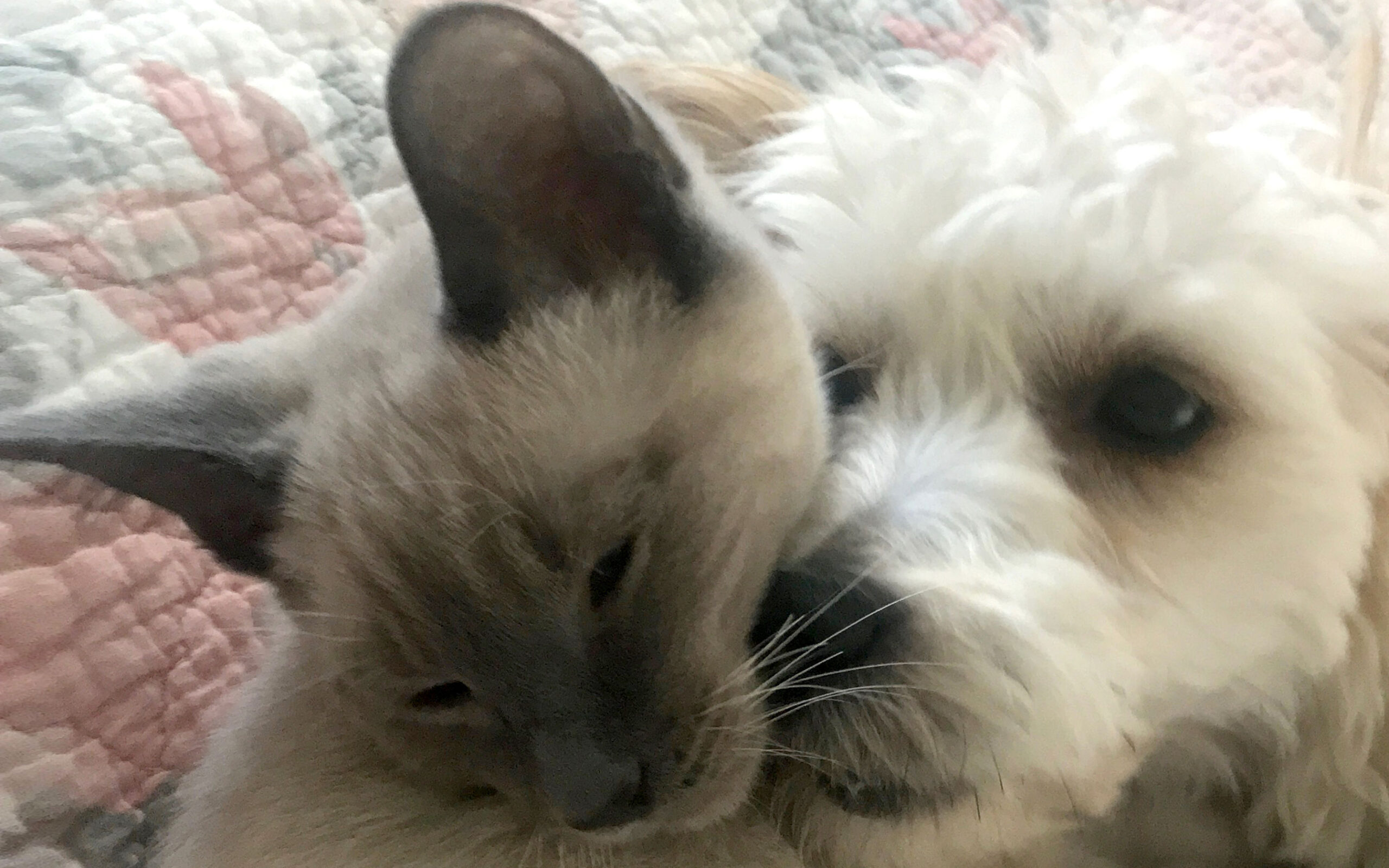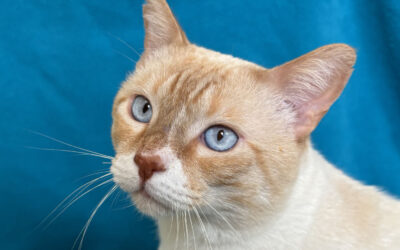
Dear Ms Kitty,
We are thinking of adopting a puppy for our two-year old Australian Sheppard, Aussie, who is still very active and needs a playmate.
We also have Jack, our five-year old cat, who tolerates Aussie. They aren’t best friends but get along most of the time. Sometimes they even play but Jack usually stops playing before Aussie is done.
Is a puppy a good idea? Or will it make things worse for Jack?
Flummoxed in Florence
Dear Flummoxed,
I get this question all the time and yes, they can get along with some thoughtful planning, training, slow introductions, and enrichment for all three pets.
Planning
- Match your puppy’s personality. Part of the equation is the personality of the puppy that you adopt. If you pick one that has a calmer demeanor, active but not hyper, and very trainable, the task at hand will go smoother. The results will probably be quicker and also be easier to maintain.
- Jack’s routines. Have routines in place that are important to Jack. Does he sleep with you at night? Can you brush him and cuddle before bedtime? Does Jack get regular playtime with you?Having a positive and consistent routine with Jack, uninterrupted by Aussie and the new puppy, will go a long way in keeping him happy and feeling confident in his territory.
- Vertical territory. One of the most important considerations is that Jack needs vertical territory so he can go up high when he feels the need. Cat trees and shelving should be a part of his environment.
- Safe Room. Jack also needs a place he can go to when he wants complete separation from the puppy. Then he can really relax, sleep, and stretch out in a sunny spot uninterrupted.
Daily playtime for a cat is just as important as going for a walk for a dog.
Training
One of the most important factors with the puppy is sufficient training. This includes learning that only gentle play is allowed. She must be trained to stop when the cat is done playing.
Adult dogs can be anywhere from ten to eighty pounds heavier than an adult cat. This would be like you trying to play with a giant 3 stories tall! Even during play a dog can injure or even kill a cat accidentally.

A puppy needs to know the basic commands of “Sit†and “Stayâ€. Your training plan also needs to include leash-training and pet gates for the new puppy. You will need to be able to restrain him in the early stages of training to prevent overly aggressive encounters.
If your puppy isn’t learning easily, please seek a professional trainer who uses positive reinforcement, such as clicker training.
Slow Introductions
Anytime you bring in a new pet to a home with a cat, a slow, careful plan should be in place.
Cats are very territorial, even more so than most dogs. They need to feel safe and confident in their territory. Cats are hardwired to be suspicious of many animals. In the wild, they are predators but also prey. Hence, their need to protect home territory against would be foes.
- Rotate territory. At first, alternate letting Jack and the puppy out in your home’s open areas. This allows both of them time to safely explore each other’s scents.
- Use the gate. After a few days, if Jack is acting normally, let him start to view the puppy through the pet gate. This allows him to investigate her on his own terms, as close or far away as he wants.
- Reward, reward, reward. Be ready with great toys and treats to distract the puppy from getting too excited at seeing Jack. Treats also go a long way in rewarding Jack to watch her in a friendly way.
- Control the introduction. Once Jack trusts the puppy and there has been sufficient puppy training, you can slowly introduce them without the gate. Put the puppy in a Down Stay if possible and let Jack drive the introduction. Never let her chase him. Make sure you can restrain her to prevent overly rambunctious encounters.
Never leave a new dog and cat alone together until you are absolutely sure the cat is safe!
For additional information on introductions, check out this link.

Enrichment
- All cats need enrichment in their environments. This includes individual time and attention from owners, an interesting set up in the environment, and challenging things to do on their own.
- Cats need interactive playtime twice a day for ten minutes.
Playing for a cat is just as important as going for a walk is for a dog. - Dozens of wonderful interactive wand toys are available. Buy a variety of these and rotate them to make playtime interesting.Find out if your cat likes balls, mice, or catnip toys and toss these for a fun play session. Some cats will retrieve toys and love to play fetch!Rotate tunnels, cardboard boxes, and paper bags (no handles) to make playtime even more interesting.
- Enrich your cat’s environment by adding vertical territory with shelves and cat trees.Cats love being up high. They feel safer and it allows them to check out their territory.Place cat trees in rooms where you spend time. Locate them by windows or patio doors for good bird viewing. Add bird baths and feeders if you don’t already have them.
Check out our Ask Ms Kitty articles on Playing with Your Cat and Environmental Enrichment for more great ideas.
By planning ahead and paying attention to the reactions of all three pets, your new puppy will be a loved member of the family in no time!

Ask Ms Kitty is a free helpline offered by Happy Cats Haven, managed by Colorado CATS, and originally sponsored by Maddie’s Fund. Tap here for more Ask Ms Kitty articles.
 Carole Galloway is the owner of Colorado CATS, a luxury cat only boarding facility in Colorado Springs that opened in 1995. Carole has cared for thousands of cats over the years and has worked as a professional Cat Behavior Consultant for the past 20 years.
Carole Galloway is the owner of Colorado CATS, a luxury cat only boarding facility in Colorado Springs that opened in 1995. Carole has cared for thousands of cats over the years and has worked as a professional Cat Behavior Consultant for the past 20 years.




